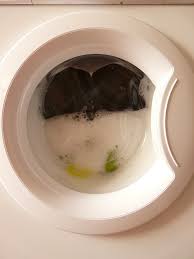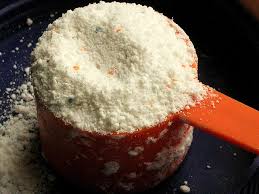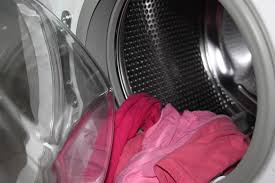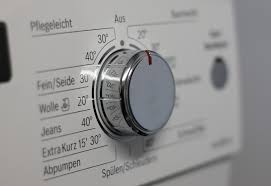7 Simple Reasons Why Your Washer Dryer is Leaking
 It has been one of those crazy days at the office. Then you rush to the shops, managing to arrive just before they close. Naturally, Murphy kicks in with his law again and you hit a traffic jam on the way back. You finally get home. But, just as you’re carrying in the groceries… what the…? Water all over the floor. Great. Just what you need – your washer dryer is leaking.
It has been one of those crazy days at the office. Then you rush to the shops, managing to arrive just before they close. Naturally, Murphy kicks in with his law again and you hit a traffic jam on the way back. You finally get home. But, just as you’re carrying in the groceries… what the…? Water all over the floor. Great. Just what you need – your washer dryer is leaking.
After laying out every towel in the house in a desperate attempt to sop up some of the soapy Brobdingnagian deluge, you resign yourself to the fact that the load you did this morning to ‘save time’ clearly had other ideas.
Now what?
There are a few reasons why your washer dryer is leaking. Here is a checklist you can run through which may help prevent the next flood. You can fix most of them yourself. But it’s always a good idea to get a professional’s help. It’s also important to remember you can void the warranty on your new machine if repairs are carried out by unregistered professionals.
So, why is your washing machine leaking?
-
Excessive use of detergent and fabric softener
It’s important to use the correct quantity and type of detergent. Too much detergent in can lead to a build-up of excess foam in the machine. This causes water to leak through various outlets, including the detergent drawer. An overdose of fabric softener can cause similar results.
It may seem silly, but read (and follow) the specified amounts for the size of the load. Pay attention to what the manufacturer considers a small, medium or large load.
 Although we all have budgets, you should try to avoid cheap, low-quality detergents, since they are prone to over-foaming. Penny-wise, pound-foolish and all that. You’re unlikely to be happy to have saved 40p on the washing load when you’ve just soaked Nana’s priceless Persian carpet. In the long run, with detergent as with all things, you get what you pay for. Low-cost detergent may also build up in your clothes and in the plumbing of the washing machine itself, causing more problems down the line.
Although we all have budgets, you should try to avoid cheap, low-quality detergents, since they are prone to over-foaming. Penny-wise, pound-foolish and all that. You’re unlikely to be happy to have saved 40p on the washing load when you’ve just soaked Nana’s priceless Persian carpet. In the long run, with detergent as with all things, you get what you pay for. Low-cost detergent may also build up in your clothes and in the plumbing of the washing machine itself, causing more problems down the line.
-
Overloading the machine
Yes, we all want to save time. It is our most precious resource and there is never enough of the stuff. But putting as much as we can into the machine is a false economy. When the machine is overloaded, the water does not drain properly. Instead it leaks out during the spin cycle. Overloading leads to residue build-up in the fabrics or the machine itself, since the water can’t flow freely. Those white marks on your favourite black jeans? Almost certainly a result of either cheap detergent or overloading.
It will save you much more time and money in the long run to simply load the machine as per the manufacturer’s guidelines with regards to the capacity of the wash drum. Sort of like putting too much food in your mouth and then trying to say ‘football’ – you will not be scoring any goals with any potential mates with that one. And having dirty clothes because of a broken washer is more than likely to have the same effect. Ultimately, as the saying goes, it’s better to “measure twice and cut once” than attempt to cram as much as possible in there.
-
Leakage caused due to a blockage
Your washer dryer may appear to be leaking even when it is not in use. This can be due to a leakage in the main water supply, rather than the washer dryer itself. Alternatively, if it leaks at the end of a cycle when water is being pumped out it can also be due to a blockage in the machine’s drainpipes caused by small garments (that is where your missing sock went, in case you were wondering) or, if you have animals, the blockage is likely from the hair left on your clothing. That water has to go somewhere, and it goes back into the washer dryer, causing overflow. This can then cause the water to flood and appear as if it’s leaking from inside the machine.
-
Leaking hoses
 There is a variety of types of hoses used in a standard washing machine. But the most common are the ones that connect your water supply (fill hose) to the water inlet valve and the hose that drains the water from your washer. You will find the inlet water valve hose at the back of your washer (usually). It controls the entry of hot and cold water into your machine. If you notice that the leakage occurs primarily when the tub is being filled, the fill hose may be the culprit.
There is a variety of types of hoses used in a standard washing machine. But the most common are the ones that connect your water supply (fill hose) to the water inlet valve and the hose that drains the water from your washer. You will find the inlet water valve hose at the back of your washer (usually). It controls the entry of hot and cold water into your machine. If you notice that the leakage occurs primarily when the tub is being filled, the fill hose may be the culprit.
There are fittings that keep the fill hose tightly in place. Make sure that the thread on these fittings has not worn away. You can also obtain very good results from buying some plumber’s tape (also called thread seal or PTFE tape) and wrapping it a few times around the thread before refitting the hose. And you can check that the tap that the hose is connected to isn’t leaking either (this is very common if the washer in the tap hasn’t been changed in a while. It’s a cheap part, but unless you are 100% sure what you’re doing, a leaky tap is best left to the plumber).
If your machine leaks even when you are not using it, it may be that the water is building up too much pressure in the tap. With nowhere else to go to, it will eventually force itself out through the tap mechanism or the thread seal. Try turning the tap off when the machine is not in use.
Hoses continued ….
The other hose that drains the water away is also situated at the back of the machine (yes, it’s not exactly convenient, considering it takes the average person five attempts to get the machine away from the wall). Check that it is properly installed and far enough down the drain pipe. If the leak occurs during the wash part of the cycle, then this hose may be the problem. As per above, also check that there is no blockage in the outlet area of the pipe. It’s also a good idea to check that there are no blockages between the pipe and the drain. If the pipe is full of water, you have found the problem.
Washers also have internal hoses that connect the inlets and outlets to the actual tub of the machine. A worn hose here can also create a leak. You would need to get right into the machine to check these out, so unless you are confident you can lift the main top or remove the cabinet to check if the hoses have degraded in places, it’s best to call a plumber.
-
Water drain pump
 The water pump pumps water down the drain. Essentially, it drains the water from the tub of the machine. It can be belt-driven, direct drive or it could be a completely separate electric pump. It will have an outlet and an inlet pipe. If the leak occurs during the wash and/or drain cycle, it is likely that the water pump is your problem. The problem could be in either of the hoses; for example, the hoses connected to the pump could be loose because the thread on the fitting that tightens the hose to the machine is stripped, or the actual hose could be worn (nearly all waterproof substances are prone to weathering, either due to movement, pressure, or even the friction of whatever is being carried through the pipe).
The water pump pumps water down the drain. Essentially, it drains the water from the tub of the machine. It can be belt-driven, direct drive or it could be a completely separate electric pump. It will have an outlet and an inlet pipe. If the leak occurs during the wash and/or drain cycle, it is likely that the water pump is your problem. The problem could be in either of the hoses; for example, the hoses connected to the pump could be loose because the thread on the fitting that tightens the hose to the machine is stripped, or the actual hose could be worn (nearly all waterproof substances are prone to weathering, either due to movement, pressure, or even the friction of whatever is being carried through the pipe).
If the connections and hoses seem to be in order, then, again, it is time to call that plumber. If you are brave enough to attempt it yourself, be sure to switch off all electrical power leading to the machine. You may be a bright spark for figuring out what the problem is but you’re likely to look less fetching when you’ve been lightly fried.
-
Washer is unbalanced
This may seem like a small issue, but because the tub is moving so fast during the spin cycle, it causes a lot of movement. An unbalanced machine can be caused by having heavier clothes on one side of the machine (rare and difficult to prevent unless you group your washing by fabric type, such as putting all your towels in together) or simply because the feet of the machine have not been equally adjusted. This can be fixed by either raising or lowering each foot until the machine is balanced and stable. Remember that it is extremely hard to detect any height differences in a floor and something that may be invisible to the naked eye, like a dimple in the wood or tile, may cause your machine to vibrate. Apart from causing leaking, this will increase vibration and wear on the moving parts.
-
The manufacturer’s drain plug
This is mentioned in the washer dryer’s manual (yes, it came with the machine when you first bought it. No, it is not written in code). You need to remove the drain plug or the washer won’t drain and will instead leave a nice big puddle. At least it will give you an opportunity to test those new Wellingtons you got for your birthday.
Some Soaps do eventually come to an end…
If your machine looks like something out of an H.G Wells’ book, you may have to face the horrid truth that you have to buy a new one. However, the coronation of your new washing machine could indeed become a reason to throw a party. And with no dirty laundry to be aired!
But please remember…
Appliances should be serviced regularly according to the manufacturer’s instructions found in the product manual. If you have a problem with an appliance, call in a NICEIC or Gas-Safe registered appliance engineer to repair your appliance. Don’t forget that if your appliance is not working optimally, you should also have it serviced to prevent further damage.
